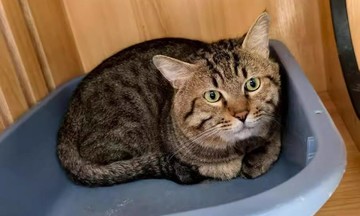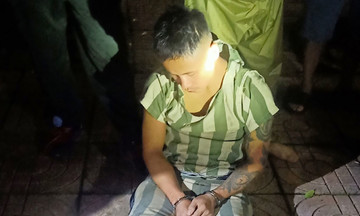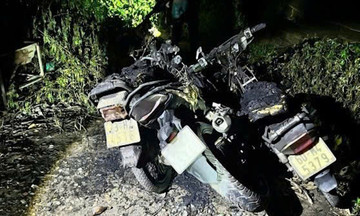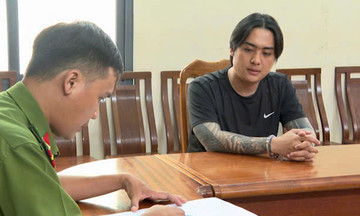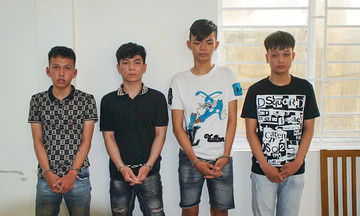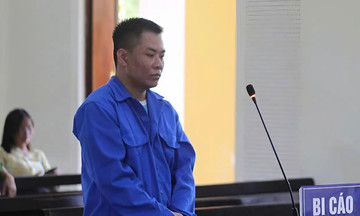In 2000, the peaceful life of Bob and Jane Dorotik in the foothills outside San Diego, California, took an unimaginable turn.
Jane, then 53, and Bob, 55, had been married for 30 years. Bob was an engineer, and Jane was a healthcare executive. The couple had three children: Alex, Claire, and Nick.
Around 1 p.m. on 13/2/2000, Bob went jogging. When he didn't return after several hours, a worried Jane drove out to look for him. By 7:45 p.m., anxiety turned to fear, and Jane called the police and her family.
In the early morning of 14/2, police discovered Bob's body lying face up on the side of the road, a few miles from their home. There was no evidence of a car accident. The victim had blood on his face and near the back of his head, with a rope around his neck.
The missing person case became a homicide investigation.
A bedroom covered in blood
Police quickly determined Bob hadn't been killed where his body was found, as there wasn't enough blood at the scene. At the Dorotik home, they noticed a piece of rope hanging on the porch, seemingly identical to the rope found around Bob's neck.
Inside the couple’s bedroom, police believed they found blood spatter on various items, leading them to conclude this was the site of the attack.
 |
Police mark areas where blood was found in the master bedroom. Photo: San Diego County Sheriff's Department |
Police mark areas where blood was found in the master bedroom. Photo: San Diego County Sheriff's Department
Jane explained Bob had a nosebleed about a week prior and had gotten some blood on the mattress. She also mentioned their dog had an abscess on its cheek that bled. However, Jane couldn't explain the blood spatter on the ceiling, windows, and walls.
Suspicions deepened when a bloodstained syringe was found in the bathroom trash can. Jane said she used it to inject medicine into her horses. She owned several horses and regularly gave them injections, storing the syringes in the refrigerator.
Investigators theorized Jane had hit her husband with an object in the bedroom and then strangled him. Afterward, she dressed him in his jogging clothes, put him in their truck, and dumped the body. They believed the motive was financial gain and a desire to escape a troubled marriage. Jane was the primary breadwinner, and the couple had separated for a year in 1997.
Jane admitted they had experienced difficulties, but insisted they loved each other, reconciled, and had been back together for a year and a half before Bob's death. Their daughter, 24-year-old Claire, confirmed her parents' relationship had improved.
However, law enforcement remained unconvinced. Three days after Bob’s body was found, Jane was arrested and charged with first-degree murder.
The trial
At the 2001 trial, the prosecution portrayed the Dorotiks’ marriage as contentious, suggesting Jane didn't want to pay alimony in a divorce.
According to the indictment, Bob was killed on the evening of 12/2/2000, nearly a day before Jane reported him missing. The autopsy showed undigested food consistent with what Jane said they had eaten for dinner on 12/2, estimating Bob was killed a few hours after the meal.
The prosecution presented evidence suggesting someone had cleaned the bedroom. The rug near the stove and the tile floor were wet, with blood underneath.
Jane explained Bob’s nosebleed had dripped onto the rug near the tile, and she had cleaned it up.
The prosecution dismissed Jane’s explanation. Their theory was that Jane hit Bob in the head with an unknown object while he was in bed, though no weapon was ever found.
Charles Merritt, a criminalist and bloodstain pattern analyst at the San Diego County Sheriff's Department Crime Laboratory, testified about 20 locations where he observed blood: "On a pillow, on a bedside lamp, the nightstand, on the stove, on the ceiling, the underside of the mattress," Merritt told the court.
The prosecution also presented evidence of tire tracks found near Bob’s body. A state expert testified that three distinct tire tracks matched Jane’s truck.
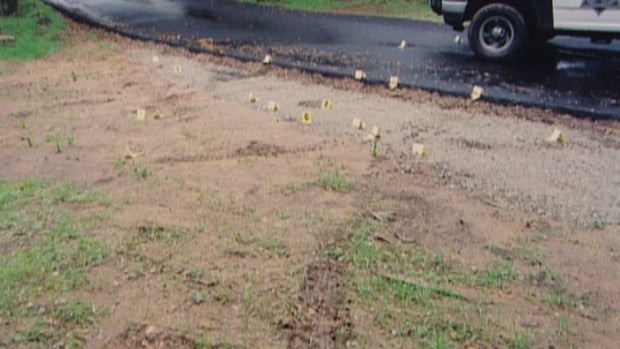 |
Tire tracks near where the body was found. Photo: San Diego County Sheriff's Department |
Tire tracks near where the body was found. Photo: San Diego County Sheriff's Department
The most compelling evidence linking Jane to the crime, according to the prosecution, was the syringe found in the bathroom trash. It contained traces of horse tranquilizer. While there was no evidence Bob had been injected with anything, the syringe had his blood and Jane’s bloody fingerprint on it.
"I only know that I helped Bob clean up the nosebleed, if that was also when I threw the syringe in the trash and had a little blood on my hand, it could have made that happen," Jane said.
The prosecution’s most impactful witnesses were the Dorotiks’ two sons, Nick and Alex. Both testified against their mother, causing a significant shock despite not offering concrete evidence.
A failed defense strategy
When it was the defense's turn, attorney Kerry Steigerwalt agreed with the prosecution on one key point: the murder occurred in the bedroom. But he offered a surprising alternative suspect: Claire.
He claimed Claire hated her father because he threatened to sell her beloved horses, implying she was capable of murder due to her temper. He also argued Jane wasn't physically capable of committing the crime, but Claire was.
This was a risky strategy that Jane reluctantly agreed to, trusting her lawyer’s judgment.
The defense also called a witness who claimed to have seen Bob on the day he disappeared, sitting between two men in a black pickup truck not far from where the body was found. Steigerwalt accused investigators of ignoring witnesses like this woman and focusing solely on Jane.
The prosecution argued further investigation was unnecessary as they had sufficient evidence.
After four days of deliberation, the jury found Jane guilty of first-degree murder. She received a life sentence with a minimum of 25 years.
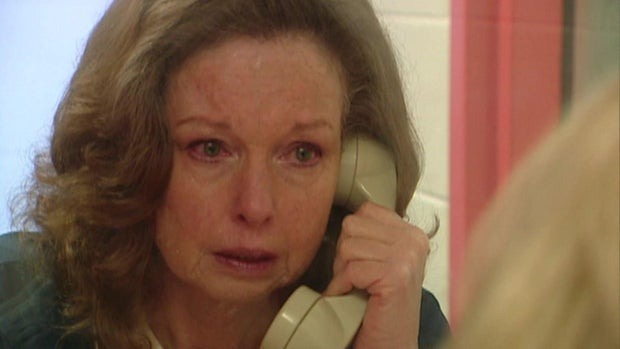 |
"I was almost numb for a minute, thinking 'this can't be happening'...", Jane cried during a prison interview. Photo: CBS |
"I was almost numb for a minute, thinking 'this can't be happening'...", Jane cried during a prison interview. Photo: CBS
The fight from inside prison
Determined to prove the jury wrong, Jane fought for herself, studying her case for years.
Throughout her imprisonment, she wrote to organizations that support wrongful conviction cases, pleading for help. Jane filed appeals based on insufficient evidence and ineffective assistance of counsel.
In her filings, Jane stated she wanted to testify at her trial but deferred to her lawyer. Had she testified, she could have explained the food in Bob’s stomach, as he sometimes ate leftovers from the previous night. Jane also said her lawyer’s alternative suspect theory, implicating Claire, was absurd.
"It was the worst strategy of my life. I told my lawyer that if anything happened to Claire, I would stand up and say I did it," Jane said.
Claire was never charged in connection with her father’s death, as she had an alibi.
Jane also questioned why her defense attorney accepted the bedroom as the crime scene instead of exploring other scenarios for where and how Bob could have been killed. Several witnesses reported seeing a man jogging that day, statements more consistent with Jane's account than the prosecution's.
"If there had been a thorough investigation into the witness statements from the beginning, it would have all been cleared up," Jane said.
For years, Jane raised issues with the entire case, arguing authorities focused on her from the outset and didn’t pursue other leads. However, her appeals were denied, including complaints about her lawyer.
Jane persisted. She continued to seek new evidence, particularly as DNA testing advanced. In 2012, she filed a motion for DNA testing of the rope around Bob's neck and other items, such as Bob's fingernail clippings, which had been preserved but never tested. In 2015, the motion was granted.
Around this time, the "Loyola Project for the Innocent," a wrongful conviction center in Los Angeles, took notice of Jane’s case. Loyola took over, completing the tests.
Re-examining the evidence
The appeal stated an unknown male’s DNA was found on some items. Jane’s DNA was nowhere to be found.
While Jane’s team believed the results proved her innocence, authorities concluded the "amount of DNA obtained was too low to make any reliable interpretations."
DNA experts argued that while the DNA was minimal, it was sufficient to exclude Jane. The absence of her DNA on the rope, under Bob's fingernails, or on his clothes contradicted the prosecution's theory that Jane strangled her husband and moved the body.
Jane's team also reviewed the blood evidence from the bedroom. The prosecution told the jury it had been fully tested and was all Bob's blood. But according to the appeal, not all suspected bloodstains in the bedroom were tested. Instead, only representative samples were analyzed.
Jane's team found that some suspected bloodstains on items including a pillowcase, nightstand, and lampshade weren't blood at all. Stains on the bedsheet, which criminalist Charles Merritt pointed to at trial and described as Bob's blood, were never actually tested. Due to improper storage, the sheet could no longer be retested.
The handling of evidence throughout the investigation was also raised in the appeal. Jane’s team pointed out an investigator collected evidence without gloves.
Regarding the syringe with Bob’s blood and Jane's fingerprint found in the bathroom trash, Jane’s team explained that if she discarded the syringe and Bob later threw away a bloody tissue, DNA could have transferred. Furthermore, if Jane had cleaned up the crime scene, she wouldn't have left a bloodstained syringe in the trash.
But authorities stood by their initial investigation, maintaining the bedroom was the murder scene and that the evidence still pointed to Jane. They claimed the defense’s arguments were "largely rooted in speculation and misrepresentation of facts."
While lawyers reviewed the evidence, Jane was temporarily released from prison in 2020 due to Covid-19 health concerns.
A final push for freedom
In the summer of 2020, Jane’s team hoped the court would overturn the jury’s verdict.
At the hearing, the prosecution acknowledged the DNA evidence in 2020 was of different quality and quantity than the evidence presented at the 2001 trial. The new DNA test results, along with issues surrounding the Crime Laboratory’s handling of evidence, cast doubt on the verdict.
Unexpectedly, the prosecution requested Jane’s murder conviction be vacated, and the judge agreed.
But Jane’s ordeal wasn't over. Three months later, the district attorney’s office decided to retry her.
In court, Jane’s lawyers questioned the credibility of some state experts, including Charles Merritt from the Crime Laboratory. The judge ruled some key evidence from the original trial wouldn't be admissible in the new trial.
In 5/2022, as jury selection was about to begin, the prosecution surprised everyone again.
In court, the prosecutor stated they no longer believed there was enough evidence to prove guilt beyond a reasonable doubt and convince a jury, and therefore requested the court dismiss the charges. The judge declared Jane free.
The case against Jane was dismissed, but charges could be refiled if new evidence emerges.
Now, Jane is trying to rebuild her life after two decades in prison. "My whole family was torn apart by this storm. It's heartbreaking," Jane said. She remains close with Claire, but Nick passed away in 2023, and Alex still believes his mother killed his father.
Many questions remain unanswered, including the most important one: what happened to Bob? Where is justice for Bob?
Jane has filed a civil suit against San Diego County. The suit also names several members of the San Diego County Sheriff’s Department and its Crime Laboratory.
Tue Anh (CBS)




